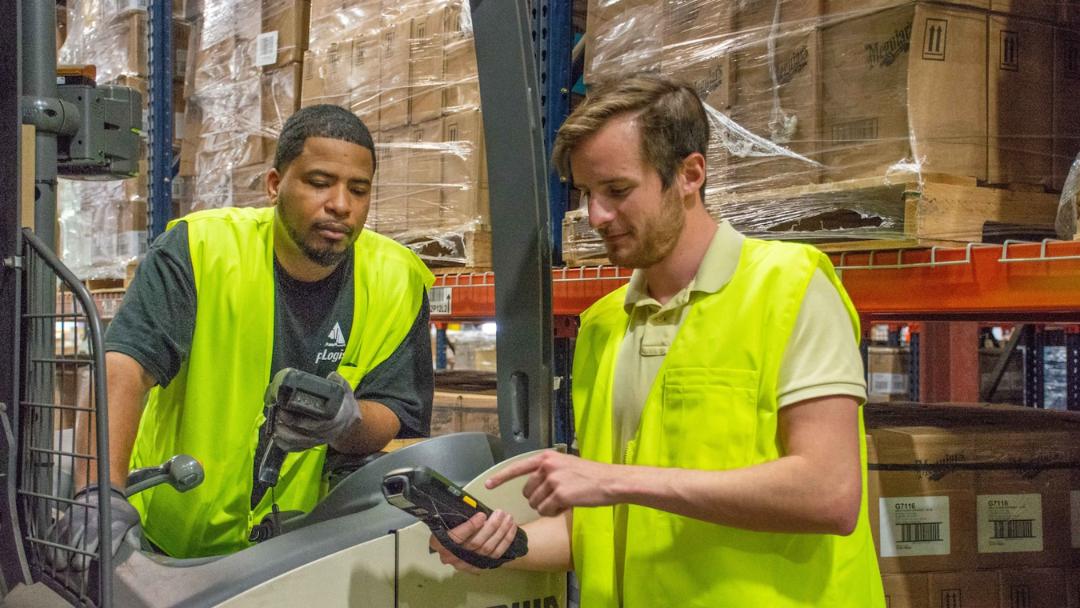Gig work has become a staple of the American economy, offering employment opportunities to people of all different backgrounds, skills, and goals. It’s a way for employers and workers to gain more flexibility and more control. But does it deliver?
We believe it doesn’t. While gig work can be a great option for some, it fails to deliver on the promises of low costs and complete control it makes to employers, just as it fails to deliver on the promises of total flexibility and uncapped earnings that it makes to workers.
Every day, we’re listening to the pains, struggles, and goals of both the companies we partner with and the Crew Members who use Bluecrew to find W-2 work opportunities. Their experiences and larger market trends have led us to believe that the gig economy as it currently stands not only fails to meet its goals but actively makes it more difficult for employers and workers to fill their needs.
What does the 1099 gig economy offer?
Many companies look to the gig economy to provide the talent they need while keeping costs low. They don’t have to pay for worker protections or benefits (this is the difference between hiring 1099 and W-2), have the flexibility to hire and fire quickly, and can adjust to variable demand quickly because they don’t have any sort of long-standing commitment to their workers.
Meanwhile, workers see benefits to taking gig jobs - they can often set their own hours, move quickly from one job or employer to another, and work as much or as little as they want. This type of no-commitment flexibility catches the eyes of both workers and employers. But it’s important to note that the gig economy isn’t the only way to get that flexibility. And, more importantly, there are a lot of pitfalls and compromises that can make it feel less than worthwhile.
Why isn’t the gig economy fulfilling its promises?
For employers, the main “perks” of hiring 1099 gig workers are financial. They have the ability to avoid paying for taxes, unemployment insurance, protections like workers’ comp, and benefits like healthcare, all while maintaining an agile workforce. However, hiring 1099 contractors almost never pays off.
Between higher turnover, lower employee engagement, and the fact that hourly workers would rather have the benefits of W-2, employers tend to end up with a flighty and low-quality workforce. The higher productivity and quality of a W-2 workforce pays for itself time and time again - and there are W-2 options like Bluecrew that help employers maintain the same level of flexibility and elasticity without the pains of 1099 gig work.
In addition, there are some significant compliance problems to a gig workforce. While gig apps have been fighting across the nation to continue avoiding the need for W-2 compliance, the number of misclassification lawsuits (and the number that have resulted in wins for workers) point to the idea that relying on misclassified 1099 gig workers won’t pay off in the long run.
Misclassification can be a huge liability for employers and result in massive fines and penalties - including personal liability for company executives responsible. And it cannot be fully avoided simply by partnering with a gig employer when hiring contractors. There are co-employment risks for companies when partnering with gig apps and staffing firms, and whenever one co-employer makes an error with wage or labor law compliance or has a misclassified employee, both can be held responsible.
What is the solution?
We believe that the problems can be solved for both employers and workers through a new model that incorporates the flexibility of gig work with the stability and protection of W-2 status. Our Elastic Hourly Workforce combines the best of gig technology, W-2 employment, and contingent staffing into an efficient, compliant, and flexible workforce-as-a-service that employers can tap into whenever they need.
For employers, this elastic workforce of high-quality W-2 that expands and contracts with the company’s needs to accommodate variable demand and keep fixed overhead costs low. They can remain agile without the added costs of direct hire yet tap into the benefits of a more engaged, stable, and productive workforce.
For workers, this is a more flexible form of W-2 work where they have the freedom to choose the jobs and employers they want most, and opportunities to grow their careers, while backed with all the benefits of being a W-2 employee.
The future is here. The gig economy is broken, but we have the opportunity to innovate: it’s time for the gig economy 2.0.


